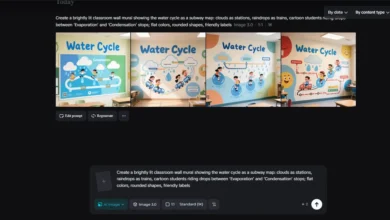
Influencer marketing has become a cornerstone of digital marketing, allowing brands to connect with their target audiences more authentically and meaningfully. However, the true value of influencer marketing lies not only in executing campaigns but also in tracking their success. Without monitoring the right metrics, businesses risk wasting resources on ineffective campaigns. In this article, we’ll explore the essential influencer marketing metrics every advertiser should track to maximize success.
The Importance of Tracking Influencer Marketing Metrics
In a highly competitive digital landscape, it’s essential to understand how influencer marketing efforts are performing. Influencer marketing metrics provide insight into the effectiveness of campaigns by measuring audience engagement, content performance, and return on investment (ROI). By carefully tracking these metrics, businesses can adjust their real-time strategies, optimize budgets, and build stronger, more impactful campaigns.
Key Influencer Marketing Metrics to Track
Below are the key metrics every brand should monitor to ensure their influencer marketing efforts deliver the desired results.
1. Engagement Rate
Engagement rate is arguably one of the most important influencer marketing metrics. It measures how actively an audience interacts with the content an influencer creates, including likes, comments, shares, and clicks. A high engagement rate signifies that the content resonates with the audience and that they are genuinely interested in the brand message.
Why It Matters:
- Audience Relevance: A higher engagement rate means that the influencer’s followers are not just passive viewers but are actively engaging with the content.
- Content Performance: It provides insight into how well the content performs with the influencer’s audience. Higher engagement means better visibility for your brand.
Monitoring engagement rate helps advertisers determine whether the influencer’s audience is responsive and if the content is generating meaningful interactions.
2. Reach and Impressions
Reach and impressions are essential for understanding the overall visibility of your influencer marketing campaign.
- Reach refers to the total number of unique users who have seen a piece of content.
- Impressions measure how often the content has been displayed, regardless of whether it was interacted with.
Why It Matters:
- Campaign Awareness: Reach helps determine the number of unique individuals exposed to your brand through influencer marketing. This is particularly important when aiming to increase brand awareness.
- Content Visibility: Impressions reveal how frequently your content is displayed, offering insights into its visibility and potential to be seen multiple times by the same users.
Balancing reach and impressions with engagement ensures that not only is your content being seen, but it’s also driving interaction and meaningful responses.
3. Follower Growth
Tracking an influencer’s follower growth during a campaign indicates how well their audience responds to the collaboration. If the influencer’s audience grows while promoting your brand, it’s a positive sign that the messaging is resonating and attracting new followers.
Why It Matters:
- Brand Exposure: As the influencer gains followers, your brand’s exposure to a wider audience increases.
- Influencer Credibility: A growing follower base suggests the influencer is relevant and effective at attracting new audiences, which can further amplify your campaign’s success.
This metric helps you determine if the influencer’s content is engaging their current followers and drawing in new ones, creating a ripple effect for your brand.
4. Conversions and Sales
While engagement and reach are important, conversions are where the rubber meets the road. Conversions measure the number of users who took a specific action, such as making a purchase, signing up for a newsletter, or downloading an app, as a direct result of the influencer’s content. Tracking conversions helps determine how well the campaign drives business goals.
How to Measure Conversions:
- Use unique tracking links, discount codes, or affiliate links to monitor the number of leads or sales driven by the influencer.
Why It Matters:
- ROI Measurement: Conversions directly impact your ROI and clearly show how effective the campaign is at generating revenue or leads.
- Campaign Effectiveness: High conversion rates indicate that the influencer engaged their audience and inspired them to take action, a key objective of most campaigns.
5. Cost Per Engagement (CPE)
Cost per engagement (CPE) is a critical metric for understanding the cost-efficiency of your influencer marketing campaign. It calculates the average cost per like, comment, share, or other types of engagement that your campaign generates.
Why It Matters:
- Budget Efficiency: By tracking CPE, you can evaluate how well your campaign budget is utilized. A lower CPE means you’re paying less for each interaction, which increases the overall value of the campaign.
- Campaign Performance: CPE helps identify which influencers are delivering the best value for your brand. If the cost per engagement is too high, it might be worth reevaluating the influencer or strategy used.
Tracking this metric helps advertisers determine the true cost-effectiveness of their influencer partnerships.
6. Sentiment Analysis
Sentiment analysis involves gauging the tone of the audience’s interactions—whether positive, neutral, or negative. By analyzing the comments, feedback, and general conversation around an influencer’s content, brands can understand how their message is received.
Why It Matters:
- Brand Perception: Sentiment analysis provides insights into how your brand is being perceived by the influencer’s audience. Negative sentiment may indicate that your messaging needs adjustment or that the partnership may not be the right fit.
- Campaign Adjustments: Real-time sentiment tracking allows brands to quickly adjust their campaigns, ensuring that negative feedback is addressed before it can impact overall performance.
This metric helps brands stay in tune with audience reactions, ensuring campaigns maintain a positive brand image.
7. Content Quality and Aesthetics
While many metrics focus on numbers, the quality of the content itself is a crucial, albeit subjective, aspect of influencer marketing. High-quality content that aligns with your brand’s tone, style, and message is essential for successful campaigns.
Why It Matters:
- Brand Alignment: Ensuring the content produced by influencers is consistent with your brand’s values and aesthetics is critical for maintaining an authentic brand image.
- Audience Engagement: High-quality content is more likely to engage and capture the audience’s attention, leading to better overall campaign performance.
Evaluating content quality helps brands ensure that the influencer delivers valuable, on-brand content that resonates with the intended audience.
8. Video Performance Metrics
As video content continues to dominate social media marketing, tracking video performance metrics is key for campaigns that involve platforms like YouTube, Instagram, and TikTok.
Key video metrics include:
- Video Views: The number of times the video has been watched.
- Watch Time: The total time viewers have spent watching the video.
- Completion Rate: The percentage of viewers who watched the video from start to finish.
Why It Matters:
- Content Engagement: Many views and a long watch time indicate that the video content resonates with the audience.
- Message Effectiveness: If viewers watch the video through to completion, it signals that your message is being delivered effectively.
Tracking video-specific metrics ensures that video content, often a major part of influencer marketing campaigns, performs well and engages audiences.
9. Audience Demographics
Understanding an influencer’s audience demographics is crucial to ensuring that your campaign reaches the right people. Metrics such as age, gender, location, and interests provide insights into whether the influencer’s audience aligns with your target market.
Why It Matters:
- Targeting Accuracy: Audience demographic data helps confirm whether the influencer’s audience matches your brand’s target audience.
- Campaign Relevance: The more aligned the influencer’s audience is with your ideal customer profile, the more likely your campaign will succeed.
By monitoring audience demographics, brands can make more informed decisions about which influencers to work with based on their audience makeup.
10. Return on Investment (ROI)
ROI is arguably the most important metric for any marketing campaign, including influencer marketing. It measures the return on every dollar spent, helping brands determine if their campaign was financially successful.
Why It Matters:
- Financial Justification: Positive ROI indicates that your influencer marketing efforts are paying off and justifies continued investment in this strategy.
- Strategy Refinement: By understanding which influencers and strategies generate the highest ROI, you can optimize future campaigns for better results.
Measuring ROI ensures that influencer marketing is not just generating engagement but also driving business results.
Conclusion
Tracking the right influencer marketing metrics is key to running a successful campaign. Metrics like engagement rate, reach, conversions, and sentiment analysis offer valuable insights into your campaigns’ performance. By carefully monitoring these metrics, businesses can optimize their influencer marketing strategies and maximize visibility and ROI.

















